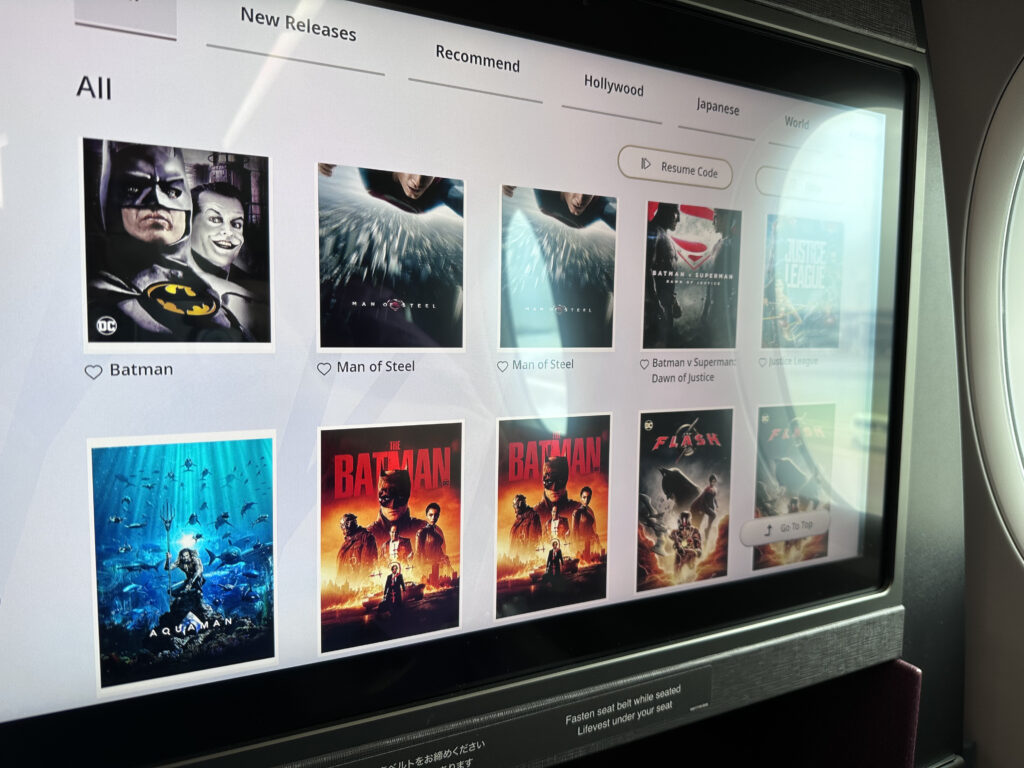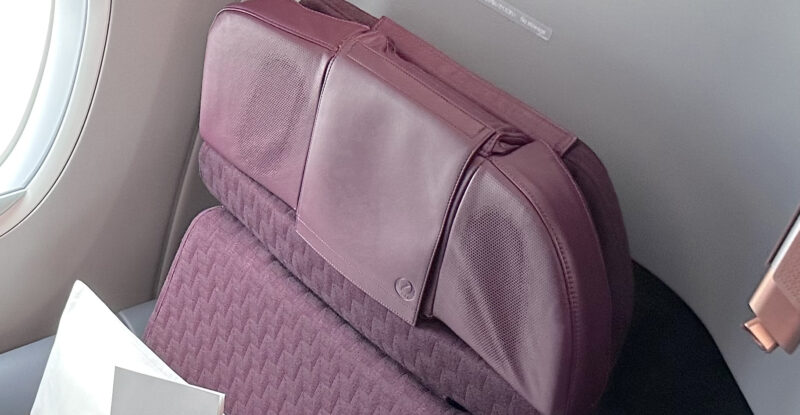 Since its reveal at the 2022 Aircraft Interiors Expo, Runway Girl Network has been watching Safran’s Euphony in-headrest speaker system with much interest. Partnering with acoustic engineers Devialet, the idea is that passengers can put down the headphones and enjoy content as if they were sitting on their home sofa.
Since its reveal at the 2022 Aircraft Interiors Expo, Runway Girl Network has been watching Safran’s Euphony in-headrest speaker system with much interest. Partnering with acoustic engineers Devialet, the idea is that passengers can put down the headphones and enjoy content as if they were sitting on their home sofa.
After experiencing artificially generated cabin white noise demos at AIX and indeed this spring at Safran Seats GB’s headquarters in Cwmbran, South Wales, this RGN journalist had the opportunity to test the system out inflight in its launch version, installed within Safran’s Unity business class seats aboard Japan Airlines’ latest Airbus A350-1000. (Full disclosure: RGN was a guest of the airline.)
There was little advertising or surfacing of Euphony’s availability, which was a little surprising. If you know it’s there, Euphony is easy to select as an option for audio output within the inflight entertainment system, alongside the noise cancelling headphones provided by the airline or a passenger’s own Bluetooth audio device.
The speakers are set into the two movable wings of the headrest, which allows a certain amount of movement, but which didn’t substantially alter the way the sound was produced or received. There was genuinely not a huge amount of difference in sound whether the headrest was flat or the two wings were wrapped around, although your 6’3”/190cm journalist did find that the wraparound was a little tight at the shoulder. (This is more of a seat height issue than a Euphony issue, in fairness.)

Euphony’s speakers wrap around in the headrest wings, although these were a little low unless I slumped down in the seat. Image: John Walton
Euphony is designed to adapt to the cabin’s ambient noise, so I tried it out on the ground, during climb and during cruise. There wasn’t any noticeable difference in audio levels during these different ambient noise levels, which suggests that the system was working as expected.
There was also little to no sound leakage outside the suite. I left Godzilla Minus One playing on purpose as I left the suite, and it was inaudible by the time I walked back to the seat behind. Unity is, though, a high-walled spacious suite, so I’m still curious how the sound leakage issue might hit on a denser product.
Overall, the sound levels were adequate to hear clear dialogue, but sounded a little flat and tinny when trying to reproduce, say, explosions in Godzilla Minus One or the sweeping soundtrack of Dune. Genuinely, that’s fair enough, and Safran has never suggested that this is some sort of cinematic experience. It was, however, hard to hear dialogue that wasn’t clear, which given the sound mixing of a lot of modern movies and television dramas is something of a drawback.
That said, having subtitles on is definitely a modern trend, and indeed one that I certainly avail myself of quite frequently with today’s content, so perhaps there is some mitigation there.

The key to a good Euphony experience is to choose the right content, and Hollywood blockbusters are to avoid. Image: John Walton
Euphony’s sound fared a lot better with shorter form non-drama content, although JAL didn’t offer a wide variety of this kind of TV within its library. Perhaps Euphony will hit its stride among those airlines with mountains of the sorts of shows one half-watches while doing something else — an episode or two of Real Housewives or Selling Sunset while having lunch, for example.
Indeed, on that note, it was noticeable how pleasant it was during the first meal service to be able to use Euphony while watching something that didn’t suffer dramatically either from the sound or from a lack of attention while interacting with the crew serving the various courses, filling up glasses, and so on. Normally, with a noise-cancelling headset one would be pulling one or both earpieces back to hear what the crew were saying, and not having to do so was refreshing. This was, overall, one of the two use cases that made sense for Euphony.
Bed mode was the other use case: an audiobook or the kind of TV that you might like to fall asleep to, without either the discomfort of using a pair of over-ear headphones or the risk of dropping a Bluetooth earbud down the seat. Again, while JAL’s content library didn’t hold much of this sort of content, it would be an excellent combination on airlines leaning harder into podcasts, sleep stories, guided meditation and so on.
On balance, Euphony worked as promised in a technical sense — now airlines just need to ensure they load the kind of content that will make it shine, and of course explain to passengers how it works.
John Walton was a guest of the airline, but all views are, as ever, his own.
Related Articles:
- JAL’s new flagship A350-1000 astounds with aesthetics and space
- Japan Airlines reveals stunning A350-1000 interiors but delays launch
- Testing Safran’s headset-free sound for premium seats
- Safran’s Unity adds premium stagger to its business lineup
Featured image credited to John Walton











